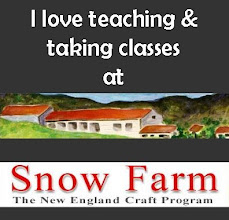Vessels
Vials
Containers
That's all I've been making lately because they're challenging in technique and yet explosive as canvases as my desire to imagine and create carefully unravels...
 |
| Photo by Coury |
Whatever
you want to call them, these pieces are ultimately one-of-a-kind pieces of jewelry
which serve a function: the oil of your choice inside the vessel supplies you
with a whiff of balance, health and energy. To see examples of vessels I've made please visit my website and Pinterest.
When
I'm surrounded by friends, I'm often surrounded by my glass vessels. Why?
Because life happens and we all need something to help us cope with those
moments.
My first vessel was born
when a friend asked me to make one for her adult daughter who has special needs.
My friend had decided, with essential oils, to help her daughter come off a few
of her dozens of different medications. The only way she figured she could do
it is by putting the oil into a pretty necklace that her daughter would want
to wear all the time. Well, it worked!
Looking back, I'm happy
to say that it worked for them and for many others who choose to have the oils
at their side contained in an art glass small vessel worn on a necklace. The
following is a quote from a friend, "My vessel focuses all my senses
on the beauty of the moment - captured by Liliana in glass - and helps put
life's stresses (big and small) into perspective."
All you need is a drop
of essential oil (to avoid spillage) which will last you for a couple of weeks. You
may renew the scent with a fresh drop or give your vessel a rinse with soap
water and try a new oil. Essential oils can be found online or, as I’ve been
doing, acquire them at Whole Foods. If you’re worried about spillage, place a
tiny piece of cotton on the bottom of your vessel to absorb the oil.
 |
This is my personal vessel which I have worn almost daily for almost two years. I've had a variety of oils in it over time which I selected based on what I was in need for at the time, i.e. energy or balance, to treat a cold or to manage appetite... I often find myself holding it in my hand and just looking at it like I would at a painting.
Photo by Coury
|
I often design and create
vessels based on specific requests about color, thematic aura and other elements preferred by the person in question. My absolute favorite is being able to imagine the person for whom the piece is destined and think of her all along the process till the vessel is ready. All vessels are made of glass which is properly annealed and constructed so that it
lasts forever. However, it is glass so treat it accordingly… with care..
I love sharing my technique and my approach to designing and creating small vessels. In order to benefit from my class, the student needs to be conversant in lampwork vocabulary and own his/her skill with moderate certainty. If not, then our journey will start with learning how to wind discs and make hollow beads. Secondly, we will learn how to blow small balls on the end of a pipe with an even bubble inside and a balanced distribution of glass around it. One exercise in class is all about designing and making handles on a barrel glass bead. Handles take longer sometimes than the vessel itself because of everything we're feeling: there's this sense of profound relief after having brought the piece to its fruition and, yet, the handles turn to be a bit tricky. That's why a week-long class is the best way to arrive at a point where all the exercises we do make sense and bring great results. All along, sprinkled atop everything we make, we will imagine color and design, and develop a sense of personal voice in our expressions.
I've scheduled to teach two such classes this year both in May. I will share everything I've learned over the years with glass: discs, hollow beads and small vessels, while tailoring my knowledge to students' concern and needs. We will discuss ways of finishing the vessels into necklaces. Let me know if you have questions by e-mail.
Glass Beadmaking: Fun with Hollows at Snow Farm in Williamsburg, MA (click the title).














